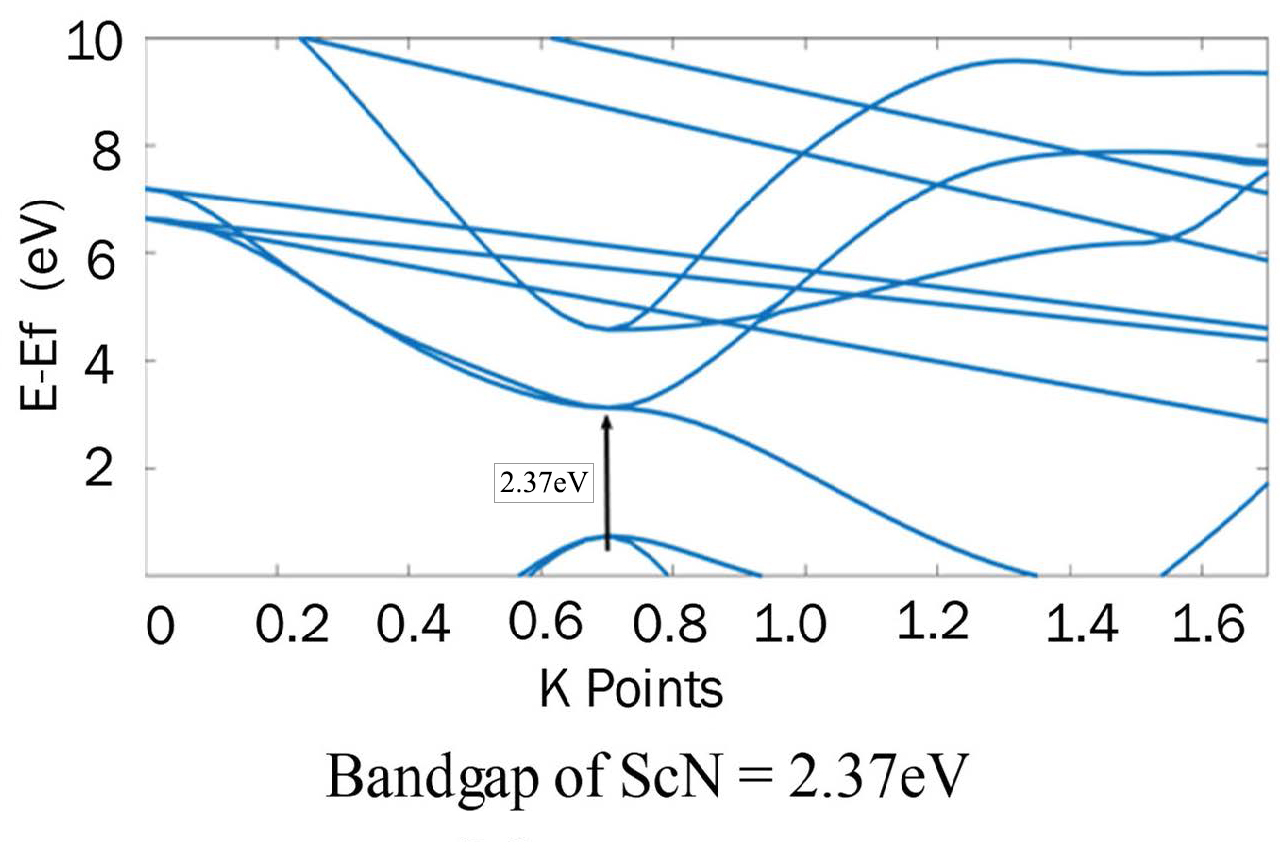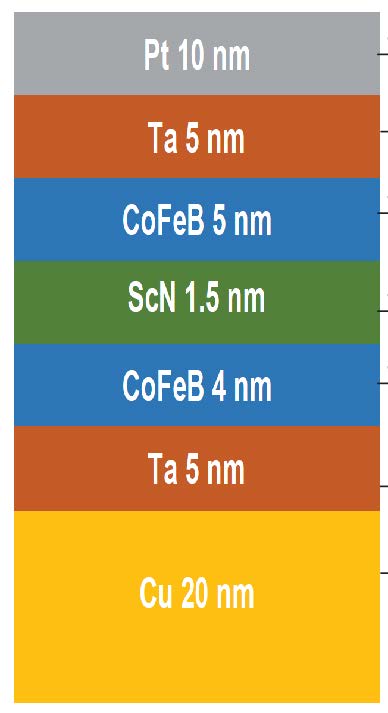Background
Spin transfer torque-magnetic random-access memory (STT-MRAM) has relied on MgO tunnel barrier based magnetic tunnel junctions (MTJs) since the discovered improvements over Al2O3 a decade ago. However, MgO presents growth challenges hindering wide use and acceptance. Small pinholes in the barrier provide a path for electrical conduction, suppressing the tunnel current. Due to the large MgO bandgap, increasing the MgO thickness past 1.5 nm to reduce pinholes severely increases the tunnel barrier resistance. This results in large device variations and the need for highly precise growth conditions.
Technology description
Researchers at The University of Texas at Austin have developed a scandium nitride (ScN) magnetic tunnel junctions as an alternative to overcome these challenges. The smaller bandgap of ScN compared to MgO would allow for use of a thicker tunnel barrier, eliminating pinholes without sacrificing current. Additionally, it has a similar rocksalt-crystal structure to MgO and Nitrogen which would reduce oxygen diffusion into the ferromagnetic electrodes. The invention consists of 1-5 nm thick ScN sandwiched between Fe, Co, or Fe-Co alloy ferromagnetic layers. There will be additional layers to the thin film stack similar to MgO-based MTJs. The invention over existing MTJs is the use of ScN material instead of MgO, and the resulting useful behavior of the ScN MTJs. Studies using density-functional theory and nonequilibrium Green’s-function methods have been performed on the interface and spin dependent transport properties of Fe|ScN|Fe.
Results
ScN MTJs have the advantage of being able to make the tunnel barrier thicker without sacrificing current. Compared to MgO, it also does not have oxygen, which normally diffuses into the ferromagnetic layers and degrades those layers. ScN will allow us to increase the thickness of the tunnel barrier past the 1.5 nm limit of MgO without sacrificing current, due to the smaller bandgap of ScN compared to MgO. This solves two problems: the difficulty of making MTJs, and high variability in MTJ behavior due to variations in tunnel barrier thickness and pinholes. Additional details are found in the published article.
 |  |
Band gap structure of ScN-based devices | Device layers of the ScN MTJ |

